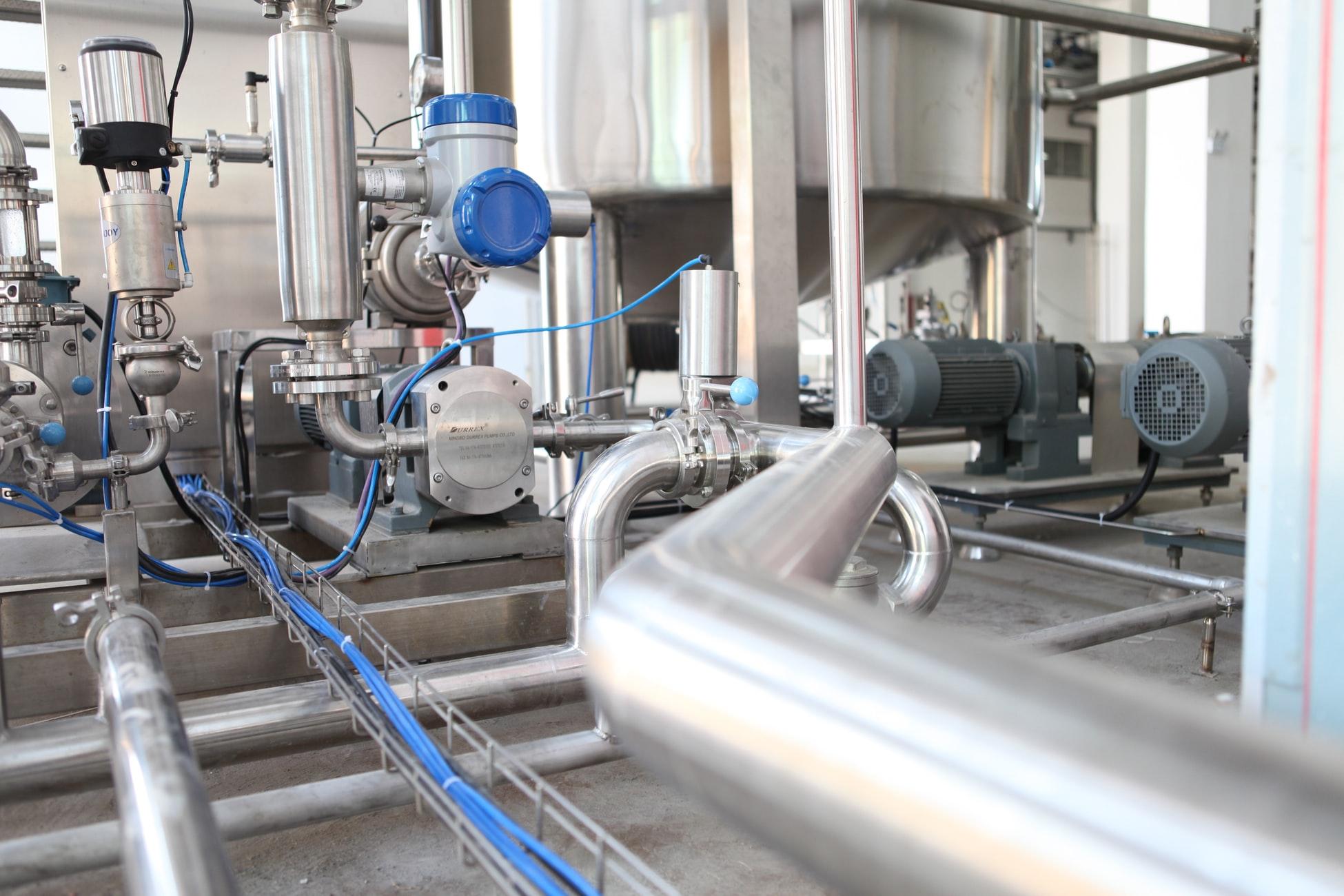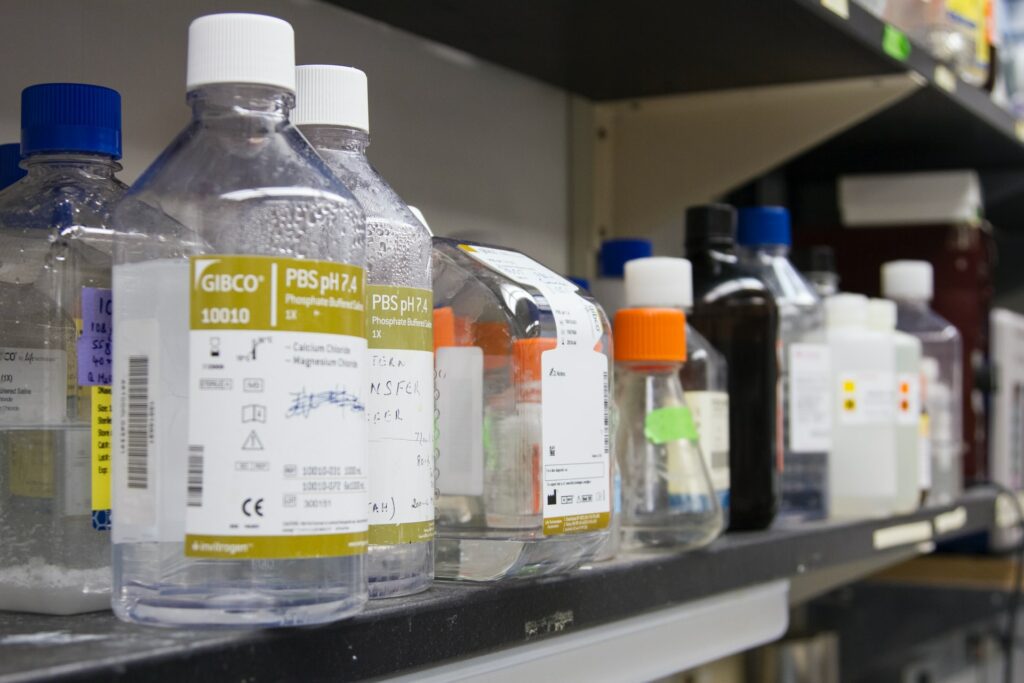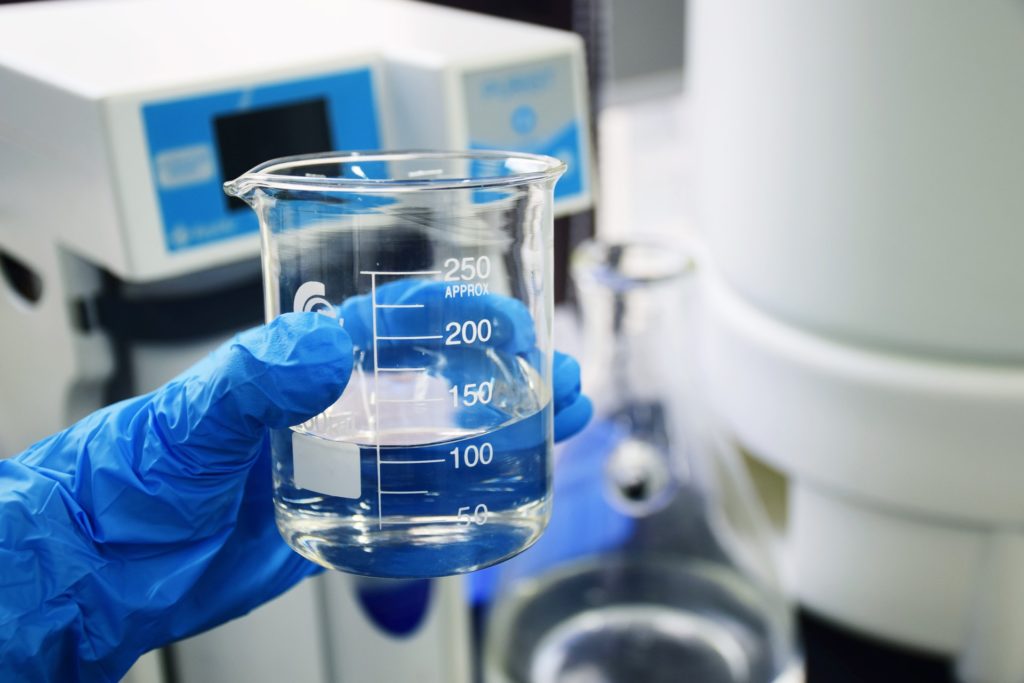03/06/2023 | Industrial Wastewater | 9 MINUTE READ
Revolutionize Your Industrial Cleaning Process

The overall quality of the water that’s used in industrial processes determines the quality of services and goods that the facility is able to provide. The quality of water must also be maintained in the solutions that a facility uses to clean industrial parts. If the water contains too many contaminants or doesn’t have the right chemistry, the parts might not be cleaned properly, which would likely result in the industrial processes becoming less efficient over time.
The pH for a cleaning solution should be monitored consistently to make sure that it remains at the correct reading. Once pH levels dip too low or increase too much, your cleaning solution may not be as effective as it should be. One cleaning solution that’s proven to be highly effective involves ultrasonic cleaners, which use high-intensity sound waves to accommodate the removal of different contaminants that are present in the solution. This in-depth guide offers a closer look at the steps you can take to revolutionize your cleaning process.

The Importance of Cleanliness in Industrial Settings
Maintaining a safe and clean environment is important in any workplace. However, industrial facilities are required to meet industry-specific and governmental regulations pertaining to the cleanliness of the environment. Industrial cleaning allows businesses to maintain their regulatory compliance while keeping the area safe for employees and customers.
Industrial cleaning also reduces the potential for legal costs. Facilities that are properly maintained have less accidents due to safety violations. Employees who are safe and healthy should be more productive as well. Another clear benefit of industrial cleaning is that you will be able to remove contaminants and other substances before they enter the environment, which is required by the EPA.
The Importance of pH in Cleaning Solutions for Industrial Parts
The pH symbol refers to “potential hydrogen” and is considered a measure of the alkalinity or acidity of a specific chemical when combined with water. Solutions that have a pH of 1.5 are highly acidic. If the pH level is anywhere between 6.5-7.5, the pH will be neutral, which means that there’s an equal amount of hydroxy ions and hydrogen ions in the water.
Solutions with a pH level that’s higher than the neutral point of 7.0 are considered to be alkaline. The pH scale ranges from 0-14. While highly acidic substances like battery acid are corrosive, highly alkaline substances can be toxic as well. An example of an alkaline substance is bleach.

How pH Affects Cleaning Effectiveness
The most effective cleaning products are ones that are present at either end of a pH scale. Even though bleach and soapy water are alkaline and vinegar is acidic, all three of these products are effective cleaning solutions. The effectiveness of the solution you use largely depends on the type of material that’s being cleaned.
If you want to remove an acidic substance from an industrial part, you’ll typically use an alkaline cleaning solution. The opposite is also true, which means that acidic cleaners will be used to remove an alkaline substance. When applied to a surface, these solutions are designed to move the substance to a more neutral pH to accommodate easy removal.
Keep in mind that there are several risks that you should be aware of when using a cleaner with a very high or low pH. Despite the effectiveness of these cleaners, the chemical reactions that occur when the cleaner meets the surface can be dangerous. For instance, toxic fumes may be released. If you don’t wear proper protection, skin damage is possible. While neutral solutions are safer to use, they aren’t as effective in most situations.
Common pH Ranges for Different Cleaning Solutions
All cleaning solutions can be acidic, alkaline, or neutral. Acidic cleaners are ones that have a pH reading below 5.0. These solutions consist of mineral acids as the primary ingredient. They are effective at getting rid of scale deposits and calcium buildup, which makes them beneficial when used to clean any type of industrial tank system.
Alkaline cleaners are made with ammonia and are mainly used to dissolve fats, proteins, and oils. These substances are broken down with alkaline cleaners, which means that they will be easier to remove. An alkaline cleaner usually has a pH level of 9.0 or above.
As for neutral cleaners, they include any cleaner with a pH level that’s above 5.0 but below 9.0. Even at the far ends of this scale, the cleaners won’t be as dangerous and toxic. An effective but safe alkaline cleaner is baking soda, which comes with a pH of 8.5.

The Role of Clean Water in Cleaning Solutions for Industrial Parts
Water is considered a universal solvent, which is why it’s required for any cleaning process that involves a liquid. As touched upon previously, different substances have different pH levels. If an industrial part is covered with grease, the most effective cleaning solution is an alkaline one that’s able to cut through the grease.
In comparison, mildly acidic cleaning solutions are ideal when attempting to clean inorganic salts off an industrial part. The water that’s present in a cleaning solution determines what the solution’s pH is.
The Impact of Contaminated Water on Cleaning Effectiveness
Whether water is too acidic or too alkaline, the concentration of contaminants in water can substantially alter its cleaning effectiveness. In most cases, hard water is worse for cleaning industrial parts. When there’s too much magnesium and calcium in water, the soap or other cleaning solution will react with the calcium to create soap scum.
When soap scum is present, you might notice it on the industrial parts after cleaning them. These spots are deposits of calcium carbonate. Hard water is also known to cause the formation of mineral deposits in pipes, which can reduce the flow of water in your facility.
Methods for Ensuring the Clean Water in Cleaning Solutions
There are numerous methods available in industrial settings to clean the water that’s used in cleaning solutions. The most common treatment processes include:
- Flotation
- Clarification
- Reverse-osmosis desalination
- Coagulation and flocculation
- Biological filtration
- Methane removal
- Activated carbon filtration
- Arsenic removal
- UV disinfection
- Ultrafiltration
- Softening
- Ozonation
The treatments that are used in your facility largely depend on the types of contaminants that are being removed and the composition of the water.

The Benefits of Ultrasonic Cleaners for Industrial Parts
Ultrasonic cleaning is a type of process that uses ultrasound to effectively agitate a fluid and produce a cleaning effect. These cleaners usually emit ultrasound waves at 20-40 kHz. When applied correctly, the contaminants on an industrial part should separate from the part, which simplifies the cleaning process.
Ultrasonic Cleaning Technology
Ultrasonic cleaning technology can be used to clean many different materials, which include rubber, ceramics, hard plastics, glass, and metals. These cleaners are effective at getting rid of contaminants that tightly adhere to the cracks and recesses in industrial parts. The types of contaminants that can be removed with ultrasonic cleaning include dirt, grease, oil, dust, and fingerprints.
When performing ultrasonic parts cleaning, the parts you want to clean will be placed in a tray or basket before being immersed in an ultrasonic cleaning tank. They are then agitated in the solution until clean.
Advantages of Ultrasonic Cleaners Over Other Cleaning Methods
The main advantages of using ultrasonic cleaners in your facility include:
- Parts can be cleaned much faster when compared to other cleaning methods
- Contaminants are removed without using high-pressure sprays, abrasion, or harsh scrubbing
- Nearly all types of contaminants can be removed with ultrasonic cleaners
- The complexity of a part doesn’t make it more difficult to clean
- This solution consumes very little power
Common Applications of Ultrasonic Cleaners in Industrial Settings
When you need to remove soot, carbon, grease, oil, and dirt, it’s better to have a cleaning solution with a high pH. Stainless steel is capable of withstanding a higher pH when compared to aluminum. In fact, a caustic solution with a pH of 13.5 shouldn’t damage steel parts.
If you’re using an acid solution with a pH range of 2.5-4.5, these are ideal when trying to remove calcium and scale deposits from industrial parts. When the pH ranges from 9.5-10, you can use the solution to clean electronic and solder flux items. If the pH is higher, the copper substrates could be damaged.
The Importance of Monitoring Water Quality in Cleaning Solutions for Industrial Parts
If you want to make sure that your cleaning solutions are as effective as possible, it’s highly recommended that you continuously monitor water quality, which can be performed with pH and conductivity sensors.

Monitoring Water Quality in Cleaning Solutions
Organic and microbial contaminants aren’t always detectable through the human senses, which is one reason why you should monitor the water quality in cleaning solutions. However, the main reason is that different substances are more effectively cleaned with different cleaning solutions.
When you use acidic water, it should be easier to remove scale deposits from industrial parts. Alkaline water can help you remove grease and oil from parts that need cleaning. By consistently monitoring water quality, you’ll know immediately when the water moves outside of the ideal pH range.
Common Contaminants Found in Industrial Water Sources
There are a wide range of contaminants that are routinely present in industrial water sources. When water is first sent into the facility, it might consist of hard minerals like magnesium and calcium. Once water is used to wash and clean parts, it will be comprised of any substance that was present on the part at the time of cleaning. The primary contaminants found in industrial waters include:
- Copper
- Aluminum
- Ammonia
- Barium
- Arsenic
- Chromium
- Fluoride
- Lead
- Bacteria and viruses
- Nitrites and nitrates
- Mercury
- Selenium
- Silver
Methods for Monitoring Water Quality in Cleaning Solutions
It’s possible to monitor water quality with different types of sensors, the primary of which include:
- Conductivity – This sensor measures how well water conducts an electrical current. It allows you to identify how many salts and impurities are in the water.
- pH – This sensor makes it easier for you to identify how acidic or alkaline a solution is. You can determine what types of contaminants are present in the water with this sensor.
Industrial cleaning is essential to maintain parts and keep them in good working condition. You can significantly improve your industrial cleaning techniques by adopting ultrasonic cleaning method, which is safer and more efficient than other methods. Make sure that you always monitor the water quality in this solution to maintain its effectiveness.
Posted by Dominic O'Donnell on March 6, 2023
Sensorex is a global leader in the design and manufacture of quality sensors for water quality and process applications. The company offers more than 2000 sensor packages for pH, ORP, conductivity, dissolved oxygen, free chlorine, chlorine dioxide, UV transmittance and other specialty measurements, as well as a full line of sensor accessories and transmitters. Its expert technical support engineers solve analytical sensor challenges with custom designs and off the shelf products.




